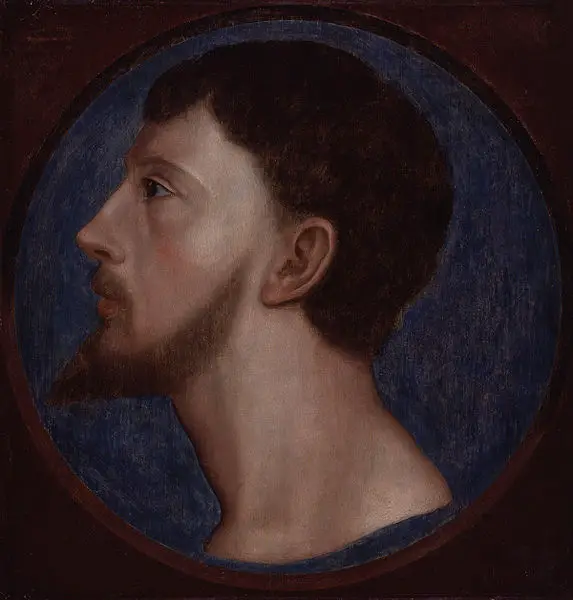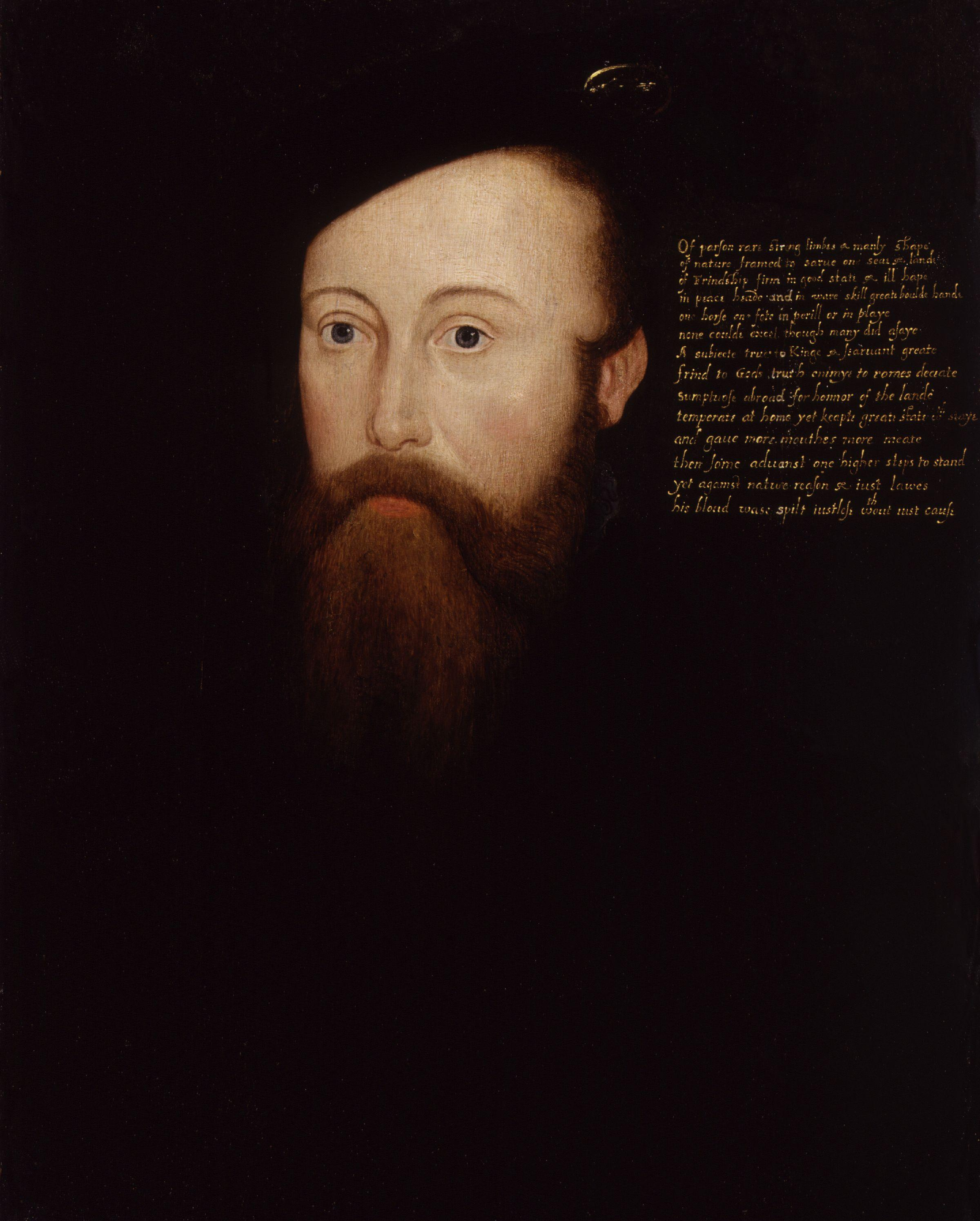 On this day in history, 18th January 1486, the twenty-nine-year-old Henry VII married the twenty-year-old Elizabeth of York.
On this day in history, 18th January 1486, the twenty-nine-year-old Henry VII married the twenty-year-old Elizabeth of York.
They made a striking couple. Elizabeth of York had classic English Rose looks – blonde hair, blue eyes and fair skin – and Henry was tall, slim, dark haired and handsome. They were the perfect couple, and their marriage brought hope to the country. It reconciled the warring Houses of Lancaster and York, and began a new royal house and era: the Tudor dynasty.
The bride, Elizabeth of York, had been born on 11th February 1466, and was the daughter and eldest child of Edward IV and Elizabeth Woodville. Her father had managed to capture and imprison Henry VI in 1461, dethroning him and taking the crown for himself, starting the royal House of York. In 1464, he secretly married Elizabeth Woodville, a young widow. It was a love match, not a diplomatic one, and caused trouble when Elizabeth alienated powerful Yorkist supporters, causing them to side with Lancastrians and challenge Edward. The result was that Edward was driven into exile and the throne became Henry VI's once more in October 1470. Henry's reign was short-lived, though, as Edward overthrew him once again in April 1471. It was a brutal coup. Ex-Yorkists and Lancastrians were defeated in battle, and Henry VI was killed in the Tower. Edward had stamped out his enemies.
Unfortunately, tragedy struck the House of York at Easter 1483 when Edward caught a chill on a fishing trip. He died on 9th April, and his thirteen-year-old son, Edward, became Edward V. Edward V was too young to reign in his own right, so his uncle, Richard, Duke of Gloucester, became the Protector. However, to cut a rather long story short, this was not enough for Richard. With Edward and his younger brother, Richard, Duke of York, ‘residing’ in the Tower of London, Richard was crowned King Richard III on 6th July 1483, and the boys disappeared, going down in history as ‘The Princes in the Tower’.
Elizabeth of York mourned the loss of her brothers, but her mother decided on revenge, and this is when she decided to approach Lady Margaret Beaufort. Although the two ladies were supposed to be on different sides, Elizabeth being from the House of York and Margaret being a Lancastrian, neither lady was happy with Richard on the throne, and decided that a union between their children could bring about Richard's downfall.
The bridegroom, Henry VII, was born at Pembroke Castle on 28th January 1457. His parents were the thirteen-year-old Lady Margaret Beaufort and Edmund Tudor, 1st Earl of Richmond, who, unfortunately, had died of the plague three months before Henry's birth. Both Margaret and Edmund were linked to the House of Lancaster. Edmund was the son of Owen Tudor and Catherine Valois (Catherine of France), the widow of Henry V and mother of Henry VI. Margaret Beaufort was descended from John of Gaunt, Duke of Lancaster (third son of King Edward III) and his mistress and eventual wife, Katherine Swynford. Neither of Henry's parents had a strong claim to the throne, with Edmund having no English royal blood and Margaret being descended from a line which was deliberately excluded from the succession. This, however, did not stop Henry VII from claiming the throne after his Lancastrian forces defeated Richard III's Yorkist forces at the Battle of Bosworth Field on 22nd August 1485, where Richard was killed.
On 27th August 1485, Henry entered London as King Henry VII, and he was crowned on 30th October. On the 10th December, Parliament petitioned him to marry Elizabeth of York, the Speaker declaring “Which marriage, they hoped God would bless with a progeny of the race of kings, to the great satisfaction of the whole realm”. Henry agreed, and the marriage took place five weeks later.
You can read more about the couple's betrothal and marriage in the Henry VII e-book which is available to Tudor Society members at https://www.tudorsociety.com/tudor-monarchs-book-series/.
Also on this day in history, 18th January 1510, Henry VIII and twelve of his men disguised themselves as outlaws, or Robin Hood and his merry men, and surprised Queen Catherine and her ladies - click here to read more.
(Taken from On This Day in Tudor History by Claire Ridgway)



Elizabeth of York must have been a steadying and guiding hand on the unsecure Henry Tudor. Unlike him she had a claim by right (in theory) as the daughter of a King, she had a direct line to the crown, not a sideways one. Elizabeth of York had been trained as a royal Princess and at the very least a future Queen consort, being betrothed to the Dauphan of France for many years. In spite of Margaret Beaufort believing Henry, Earl of Richmond (who may have been a Beaufort rather than a Tudor according to JAH) was the rightful King of England all of his life, for most of it he had a very slim chance of succeeding and was not raised with the skills to govern. When Henry usurped the crown, from its rightful owner on the battlefield, he did so because of luck, betrayal and what he called prophecy. When he was born, however, he was nowhere near being King and by the time of his fourteen years exile, he was even further distant. At that time, Elizabeth had brothers and the Clarence children were about to be born. In 1477 at least seven healthy males stood ahead of Henry Tudor in the line of Succession, let alone female heiresses. By twists of fate, assuming the death of the two princes, or one King, one Prince, by Christmas 1483 when Henry promised to marry Elizabeth, two people only stood in his way…Richard and his son, Edward of Middleham, Prince of Wales. You can see why he now had more hopes of taking the crown. Margaret and Elizabeth Wydville came to an agreement and prepared the way for Henry, the guest/prisoner of the Duke of Brittany and his uncle Jasper to invade. Henry failed in his first attempt, as Buckingham failed to depose Richard, but he waited and gained a small following while in exile. By the end of 1484, things were looking even better for Henry, as sadly the Prince of Wales had died that Summer, aged 10 and Queen Anne was ill. Henry made his plans to invade. Despite having the much larger army and popular support, Richard was betrayed by the self interest of Lord Stanley, Henry’s stepfather and Sir William Stanley who struck a bargain with Henry to support him. Henry was losing and almost killed at Bosworth when Richard attacked, but Stanley came in behind him and he was killed fighting in the midst of his enemies.
Elizabeth of York was given to Henry but she came to love him and some historians believe that they had a sexual relationship before marriage. Henry had to wait because he needed the Pope to give his permission as both parties were related via John of Gaunt and the House of Plantagenet and Beaufort. Henry was not waiting, as is sometimes suggested, because of continuing rumours that Elizabeth fancied Richard iii. Yes, Elizabeth may have found him attractive, he must have thought his neice was beautiful, but Richard had publicly avowed he had no interest in his lovely eighteen years old niece. In fact, Richard was betrothed to Joanna of Portugal, so why would he marry Elizabeth? It may have been rumoured in March 1485 that Anne Neville, his Queen had been poisoned, but the evidence does not support this. Richard may have considered Elizabeth to thwart Henry and there is evidence to support this was feared by Henry, as he asked about Maud Herbert as an alternative bride. This lady also had a claim to the crown. Henry can only have been relieved when he won the crown by right of conquest to find Elizabeth still in tact and free to marry him. He also had to wait for his first Parliament to meet to set aside the legislation that made Elizabeth and her brothers and sisters illegitimate…which he then ordered all copies to be destroyed. Henry also had to have himself crowned first to show he came to the throne via prophecy, the legitimate heir via ancient Kings of Britain and Wales. Henry was creating mythology for his new house of Tudor. The fact that Elizabeth quickly conceived, either just before their marriage or on their wedding night and gave birth to a Prince, reinforced the mythology. Elizabeth supported her husband with more than her bloodline.
Henry and Elizabeth seem to have been happy, content, productive and faithful. Elizabeth was a serene, supportive Queen, carried out all the usual duties, was charismatic, charming, wise, generous, very well educated, intelligent, politically astute, a good mother, genuinely concerned to give her husband heirs, even to the loss of her own life, a companion and an excellent role model. I don’t, however, believe that she mourned her brothers as she did not know what had happened to them. She was aware of the rumours, but it has recently been suggested that she had reason to believe one of them was alive. Elizabeth could also be haughty, proud and was a true Plantagenet. She was not close to her brothers and had not seen the older boy for several years. Without evidence of their deaths, why would she mourn them? Do you have a source to show that Elizabeth definitely mourned, as in wore black, wept, put up a memorial, chantry chapel for them, etc, thank you in advance?
When Elizabeth died Henry did not marry again, there is little evidence that he had illegitimate children or a mistress. He may have looked about but I doubt anyone came close to her as his soul mate. Henry was darker in his personality afterwards. I believe that she guided him in statecraft, he lost some of this after his wife’s death.
P.S. Although Maud had married the Earl of Northumberland, her three sisters remained unmarried and it was one of these that Henry now sought via Christopher Unswick according to Virgil both to the Earl and younger Herbert brother, Walter, who had some interest in Henry’s cause as he had something to gain. Fortunately for Henry, Richard had very little interest in marriage to Elizabeth as his niece and his promise to wed her and unite the two houses was still on. Henry also appears to have been taken with Elizabeth at their first meeting.